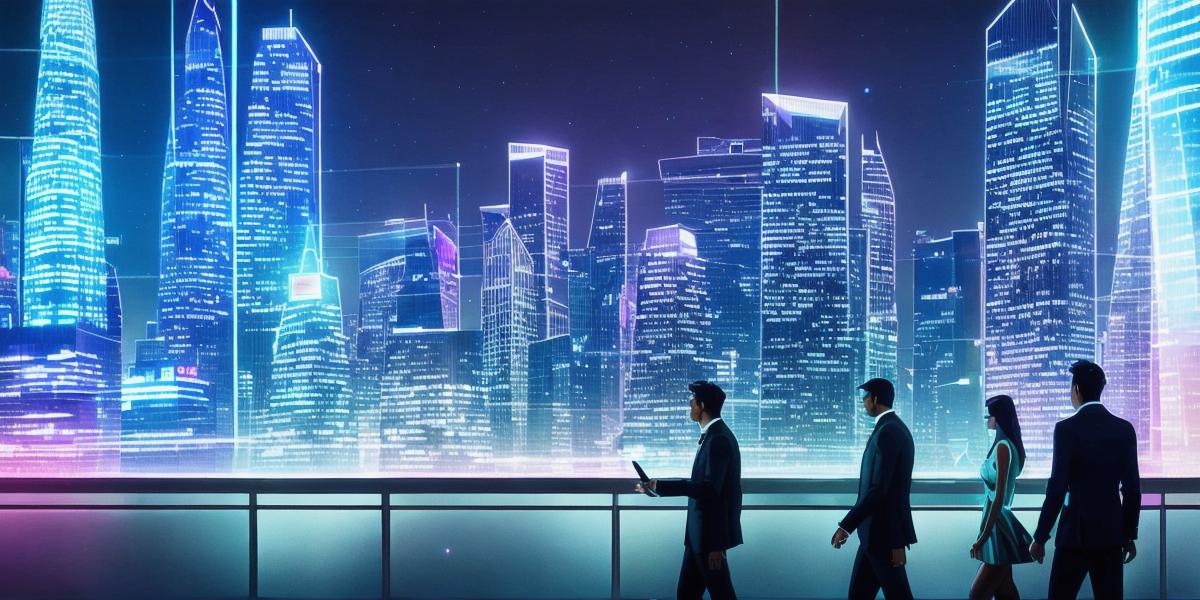As technology continues to evolve, decentralized web (Web3) and XR (extended reality) technologies are gaining popularity among developers and businesses alike. These two technologies have the potential to revolutionize how we interact with digital content and each other, providing a more secure, private, and immersive experience. In this comprehensive guide, we will explore the future of decentralized web with Web3 XR technology and how it can benefit web3 developers.
Understanding Decentralized Web (Web3)
The decentralized web, also known as Web3, is a vision for the internet that prioritizes user privacy, security, and control over centralized entities such as governments and corporations. This new paradigm shift aims to create a more democratic and transparent system where users have greater control over their data and online interactions.
The decentralized web relies on blockchain technology to enable secure, decentralized transactions and data storage. Smart contracts can be used to automate various processes, such as identity verification and payments, without the need for intermediaries. This results in a more secure and efficient system that eliminates the need for centralized authorities to manage online interactions.

Exploring XR Technology
XR technology is a new approach to immersive experiences that combines virtual reality (VR), augmented reality (AR), and mixed reality (MR) technologies. These technologies enable users to interact with digital content in a more natural and intuitive way, allowing them to experience the world as if they were physically present.
XR technology has numerous applications across various industries, including gaming, education, healthcare, and tourism. For example, virtual tours can be used to allow people to explore different parts of the world without leaving their homes, while XR-enabled surgeries can provide more precise and efficient surgical procedures.
The Intersection of Web3 and XR Technology
Web3 technology and XR technology are intertwined and have the potential to create a more decentralized and immersive online experience. By combining these two technologies, users can enjoy greater privacy, security, and control over their digital interactions while also experiencing an immersive and interactive environment.
One of the key benefits of integrating Web3 technology with XR technology is the ability to create decentralized marketplaces for digital content. This enables creators and developers to monetize their work without relying on centralized platforms such as Facebook or Google. Additionally, by using blockchain technology, transactions can be secure and transparent, ensuring that users have greater control over their data and online interactions.
Case Studies and Personal Experiences
Several companies are already exploring the intersection of Web3 and XR technology. One example is Decentraland, a decentralized social network that uses blockchain technology to enable secure and private transactions. Users can create avatars and interact with each other in a virtual world, while also enjoying access to decentralized marketplaces for digital content.
Another example is Virtual World Society (VWS), a decentralized platform that enables users to create and monetize their own VR experiences. By using blockchain technology, VWS ensures that users have complete control over their data and online interactions, while also providing a secure and efficient marketplace for digital content.
FAQs
Q: What is Web3 XR Technology?
A: Web3 XR Technology refers to the intersection of decentralized web (Web3) and extended reality (XR) technologies. These two technologies have the potential to create a more secure, private, and immersive online experience.
Q: How does Web3 technology enable decentralized marketplaces for digital content?
A: By using blockchain technology, transactions can be secure and transparent, ensuring that users have greater control over their data and online interactions. This enables creators and developers to monetize their work without relying on centralized platforms such as Facebook or Google.
Q: What are some examples of companies exploring the intersection of Web3 and XR technology?
A: Decentraland and Virtual World Society (VWS) are two examples of companies that are already exploring the intersection of Web3 and XR technology. These companies use blockchain technology to enable secure and private transactions, while also providing a decentralized marketplace for digital content.
Summary

The intersection of Web3 and XR technology has the potential to revolutionize how we interact with digital content and each other. By combining these two technologies, users can enjoy greater privacy, security, and control over their digital interactions while also experiencing an immersive and interactive environment. As more companies explore this intersection, we can expect to see a more decentralized and immersive online experience in the future.
